Morfa Chapel (Capel Y Morfa) is a Welsh Presbyterian Chapel situated in Portland Road, Aberystwyth and was formed in 1989 by the amalgamation of two other chapels, Shiloh (Seilo) and Salem. The congregation was joined by those of Tabernacle in 2002 following its closure. On the closure of Shiloh both the WW1 and WW2 memorials were moved to Capel Y Morfa. In May 1920 a service was held in Shiloh to unveil the memorial to the members of the chapel who died in The Great War, which reported on in the Welsh Gazette of 21 May 1920; ‘Er cof am aelodau a meibion o’r Eglwys hon a aberthodd eu bywyd yn Rhyfel 1914-1918. Sef. Joacim Bonner, Albert Davies, Alfred J Edwards, Edward J Edwards, William J Edwards, J Arthur Jones, Edward David Evans, J Llewellyn Griffiths, Evan T Hughes, David W Jenkins, David Jones, Thomas J White, William Jones, Caradog Jones, David A Mort, Hugh Owen Rowe, James Rowlands.’
Morfa Chapel (Capel Y Morfa) Memorial, The Great War, 1914-1918
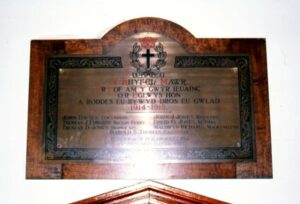
John Jenkin Davies, Company Quartermaster Sergeant, 320157, Welsh Regiment. John was the son of John and Anne Davies, of Frondeg Farm, Llanfarian, and the husband of Elizabeth Davies, of 32, Bridge Street, Aberystwyth. He had enlisted into the Pembroke Yeomanry several years prior to the war, and after mobilisation, moved to Norfolk with the regiment. During March 1916 the 1/1st Pembroke Yeomanry moved to Egypt, where it merged with the Welsh Border Mounted Brigade and formed the 4th Dismounted Brigade. On 2 February 1917 it merged with the 1/1st Glamorgan Yeomanry to form the 24th Battalion, Welsh Regiment, and became attached to 231 Brigade, 74th (Yeomanry) Division. The Division had formed in Egypt in January 1917 and had fought through the Palestinian Campaign, at the Battles of Gaza and the Battle and capture of Jerusalem. Due to the terrible casualties suffered by the British on the Western Front in March and April 1918 the Division was recalled to the Western Front, and arrived at Marseilles during May 1918. They then fought at the Second Battle of Bapaume during the great offensive, and fought in Flanders before returning to the Somme and fighting at the Battle of Épehy, as part of the offensive towards the Hindenburg Line. They then fought in the final advance in Artois. John was killed in action here on 20 October 1918, when the 24th Welsh was moving into the village of Lamain. He was 42 years old, and is buried at Lamain Communal Cemetery, Belgium. The photographs are courtesy of John Rhys Davies.
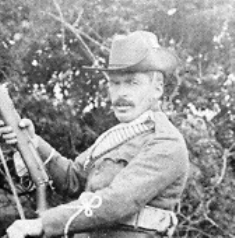
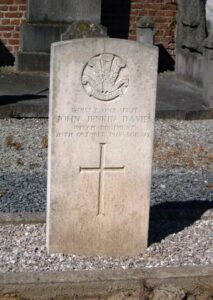
Thomas James Edwards, Flight Cadet, 181262, Royal Air Force. Thomas was born on 20 June 1892, the son of Thomas and Margaret Edwards, of 6, Grandison Street, Briton Ferry. He was a student prior to the war and had served at Gallipoli and in Egypt with the South Wales Borderers, being promoted to Second Lieutenant. He volunteered to join the Royal Air Force to train as a pilot on 30 July 1918, and became a Flight Cadet at Uxbridge. He died of pneumonia there on 1 December 1918, aged 27, and was brought home for burial with full military honours at Neath (Ynysmaerdy) Cemetery.
David Owen Jones, Gunner, 168380, Royal Field Artillery. David was born in London in 1887, the son of Daniel and Margaret Jones, of Hafodlasissaf. He enlisted at Aberystwyth into the Royal Field Artillery, and was posted to France at some time in 1916 with 23rd Battery, 40th Brigade, Royal Field Artillery, which was attached to the 3rd Division. David probably fought on the Somme on 1916, and moved to Ypres with the Division the following year. David was wounded at Ypres, and died of his wounds at Remi Sidings Casualty Clearing Station on 13 October 1917. He was 30 years old, and is buried at Lijssenthoek Military Cemetery, Belgium.
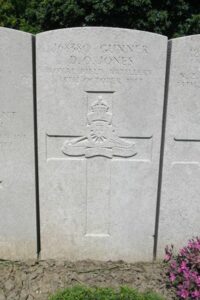
John James Jones, Driver, 243868, Royal Field Artillery. John was born in 1894, the son of Jane Jones, of Brynteg, Custom House Street, Aberystwyth. He served on the Western Front as a Driver with the Royal Field Artillery. John died of influenza and pneumonia at Ripon Military Hospital on 18 November 1918, aged 24. His remains were brought home and John was buried in Blaenplwyf Calvinistic Methodist Chapelyard, Blaenplwyf, Aberystwyth.
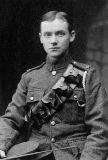
Thomas David Jones, Rifleman, R/4270, King’s Royal Rifle Corps. Thomas was born at Miles Platting, Lancashire in 1883, the son of Mary Jones. He was brought up in Aberystwyth, and had served for six months with the 1st Cardigan Volunteer Artillery in 1902. Thomas enlisted on 13 September 1914 at St. Paul’s Churchyard, London, into the King’s Royal Rifle Corps. On 8 October 1914 Thomas was posted to the 13th Battalion, King’s Royal Rifle Corps. The battalion moved to Windmill Hill, Salisbury Plain in April 1915, joining 111 Brigade, 37th Division, before landing at Boulogne on 31 July 1915. The division concentrated near Tilques, before moving into positions on the Somme, where it saw its first major action on 1 July 1916 at the Battle of Albert. On 4 August 1916, Thomas was admitted to the 2nd Field Ambulance, suffering from multiple gunshot wounds, which he’d suffered during an attack on the Somme that day. Thomas died of his wounds on 8 August 1916, aged 32. He is buried in Bois Guillame Communal Cemetery, France.
Maldwyn Richards, Corporal, 320175, Welsh Regiment. Maldwyn was born in Machynlleth in 1881, the son of Evan and Ellen Richards. He was a Postman at Aberystwyth prior to the war, and had served with the Pembroke Yeomanry. At the outbreak of war Maldwyn was called up, joining the Pembroke Yeomanry at Lampeter. During March 1916 the 1/1st Pembroke Yeomanry moved to Egypt, where it merged with the Welsh Border Mounted Brigade and formed the 4th Dismounted Brigade. On 2 February 1917 it merged with the 1/1st Glamorgan Yeomanry to form the 24th Battalion, Welsh Regiment, and became attached to 231 Brigade, 74th (Yeomanry) Division. The Division had formed in Egypt in January 1917 and had fought through the Palestinian Campaign, at the Battles of Gaza and the Battle and capture of Jerusalem. Maldwyn was killed during the march to Jerusalem on 31 October 1917, aged 36. He is commemorated on the Jerusalem Memorial, Israel.
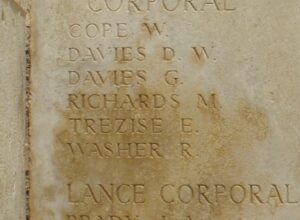
Harold Sylvanus Thomas, Private, 9909, Honourable Artillery Company. Harold was born at Aberystwyth, the Son of John and Margaret Thomas, of Granville, 1, North Parade. He resided in St. Clears at the outbreak of war, where he worked as a Bank Clerk, and enlisted at Carmarthen on 8 December 1915, and the following month was at Armoury House, London, after being posted to the 2nd Battalion, Honourable Artillery Company. The Battalion was attached to 22 Brigade, 7th Division, and on 3 October 1916 landed at Havre, taking part in the advance to the Hindenburg Line in early 1917 after the German withdrawal. In Spring 1917 the Battle of Arras was launched, and Harold was killed in action on 15 May 1917, during the Battle of Bullecourt, after being shot in the head. He was 25 years old, and is commemorated on the Arras Memorial, France.
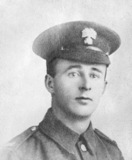
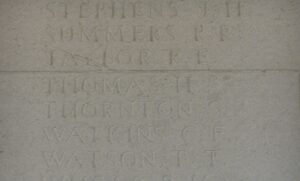
Morfa Chapel, World War Two, 1939-1945
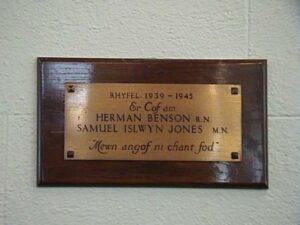
Herman Benson, Leading Writer, D/MX 67836, Royal Navy. Herman was the son of Russell Heber Benson and Elizabeth Benson, of Aberystwyth. He served on the Cruiser HMS Charybdis, which had been commissioned in December 1941. In 1942 she did valuable service in the Mediterranean, as an escort ship during the important Malta Convoys. In October 1943 she was part of a force sent to intercept the German blockade runner Munsterlund off the Britanny coast, but during the night a flotilla of German torpedo boats attacked the Charybdis and the other vessels and made off into the night. The Charybdis was sunk with the loss of 30 officers and 432 ratings. Herman was 23 years of age when he lost his life on 23 October 1943 and is commemorated on the Plymouth Naval Memorial, Devon.
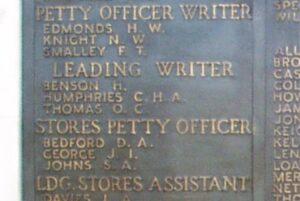
Samuel Islwyn Jones, Chief Officer, Merchant Navy. Samuel was the Husband of Irene Jones, of St. Cenydd Road, Heath, Cardiff. He served with the Merchant Navy aboard the SS Fircrest, a London registered steamer. On 25 August 1940, Fircrest was on route from Wabana, Conception Bay via Halifax to Middlesbrough in Convoy HX-65A, carrying a cargo of 7,900 tons of iron ore, when she was torpedoed by the German submarine U-124, and sunk with the loss of 39 lives, 23 miles north of the Butt of Lewis, Hebrides. Samuel was 33 years old when e died that day, and is commemorated on the Tower Hill Memorial, London.